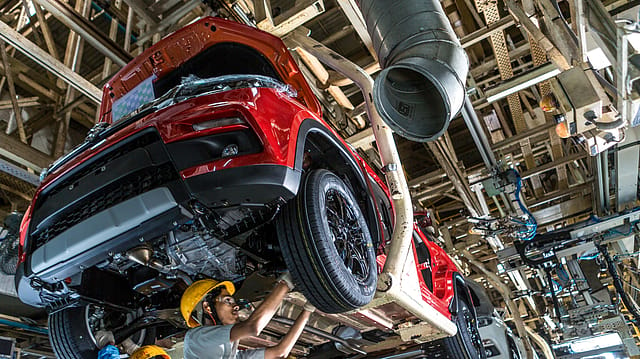Demand for auto components to remain buoyant despite weak exports: ICRA
ADVERTISEMENT

ICRA expects its sample of 49 auto ancillaries with aggregate annual revenues of close to ₹3 lakh crore to grow by 8-10% in FY23, supported by healthy demand from the domestic OEM segment along with pent-up demand from aftermarket even as headwinds persist on the exports front.
Growth for auto component makers is also favourably aided by rising content per vehicle, resulting in an increasing share of the premium and feature-packed vehicles in the overall mix, besides greater thrust by OEMs to locally source components, the ratings agency says.
Select companies have also started witnessing a healthy ramp-up in revenues with a steadily rising share of Electric Vehicles (EVs), where content per vehicle is expected to rise considerably, says ICRA, adding that these trends will translate into healthy growth for auto component suppliers over the medium-to-long term.
Aided by the benefits of operating leverage and easing commodity prices and supply chain disruptions, ICRA expects YoY improvement of 50-75 basis points in operating margins of auto ancillaries in FY23, with margins for the excluding-tyre sample likely to return gradually to pre-Covid levels of 10.5-11%.
ICRA, however, says certain headwinds will persist, especially for companies with a high share of imports owing to rupee depreciation vis-a-vis the US dollar and elevated cost of raw materials linked to crude oil derivatives.
"Domestic OEM demand constitutes almost 50% of sales for the Indian auto component industry. This is likely to remain healthy in FY2023, with double-digit growth expected in both passenger vehicle and commercial vehicle segments,” says Vinutaa S, vice president and sector head, ICRA.
January 2026
Netflix, which has been in India for a decade, has successfully struck a balance between high-class premium content and pricing that attracts a range of customers. Find out how the U.S. streaming giant evolved in India, plus an exclusive interview with CEO Ted Sarandos. Also read about the Best Investments for 2026, and how rising growth and easing inflation will come in handy for finance minister Nirmala Sitharaman as she prepares Budget 2026.
“Demand for public and private transport is expected to remain healthy with an increase in mobility, supported partly by the reopening of schools and offices. This, along with steady freight movement, is likely to aid replacement volumes in the near term. The replacement segment is also expected to benefit from the likely postponement of new vehicle purchases due to an increase in vehicle prices with cost inflation and elongated waiting periods, especially in the PV segment, because of supply-chain issues being faced by OEMs on account of semi-conductor shortage,” Vinutaa says.
Cost inflation continues to be a key headwind for the industry. Commodity and freight costs remain at elevated levels compared to the pre-pandemic lows, says ICRA.
“Ancillaries are looking at enhancement of product portfolio and increased value addition/content per vehicle. The new products targeted are largely EV agnostic or for EVs,” the rating agency adds.
On the impact of rupee depreciation on the industry, Vinutaa says, “Imports are an integral part of the auto component industry, especially with the increase in electronics and advanced technology components. While a gradual increase in usage of advanced components unavailable in India has contributed to import increases over the years, supply chain disruptions and domestic market recovery contributed to an increase in imports in FY22.”
The auto component imports in India stood at $18.3 billion in FY22, with China and Germany being the largest source markets, contributing 30% and 11%, respectively.
